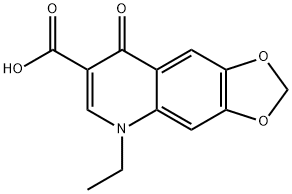Developed in Japan in the 1970s, oxolinic acid belongs to the family of quinolone antibiotic, which is a synthetic antimicrobial agent aiming at gram-negative bacteria, especially those responsible for urinary tract infections. It is also commonly used in clinical for microbiological antimicrobial susceptibility tests against gram negative microbial isolates, providing antibiotic treatment options for infected patients. It can serve as a selective agent in several types of isolation media, for example, to isolate Gardnerella vaginalis. Besides, oxolinic acid can be applied in agriculture, which has proved to be effective against the seed-borne pathogen, such as Burkholderia glumae, a bacteria inducing grain rot, sheath rot, seedling rot, and bacterial panicle blight.
Oxolinic acid works by targeting DNA gyrase or topoisomerase II, enzymes vital for DNA synthesis, which ultimately inhibits DNA synthesis and cell division.

